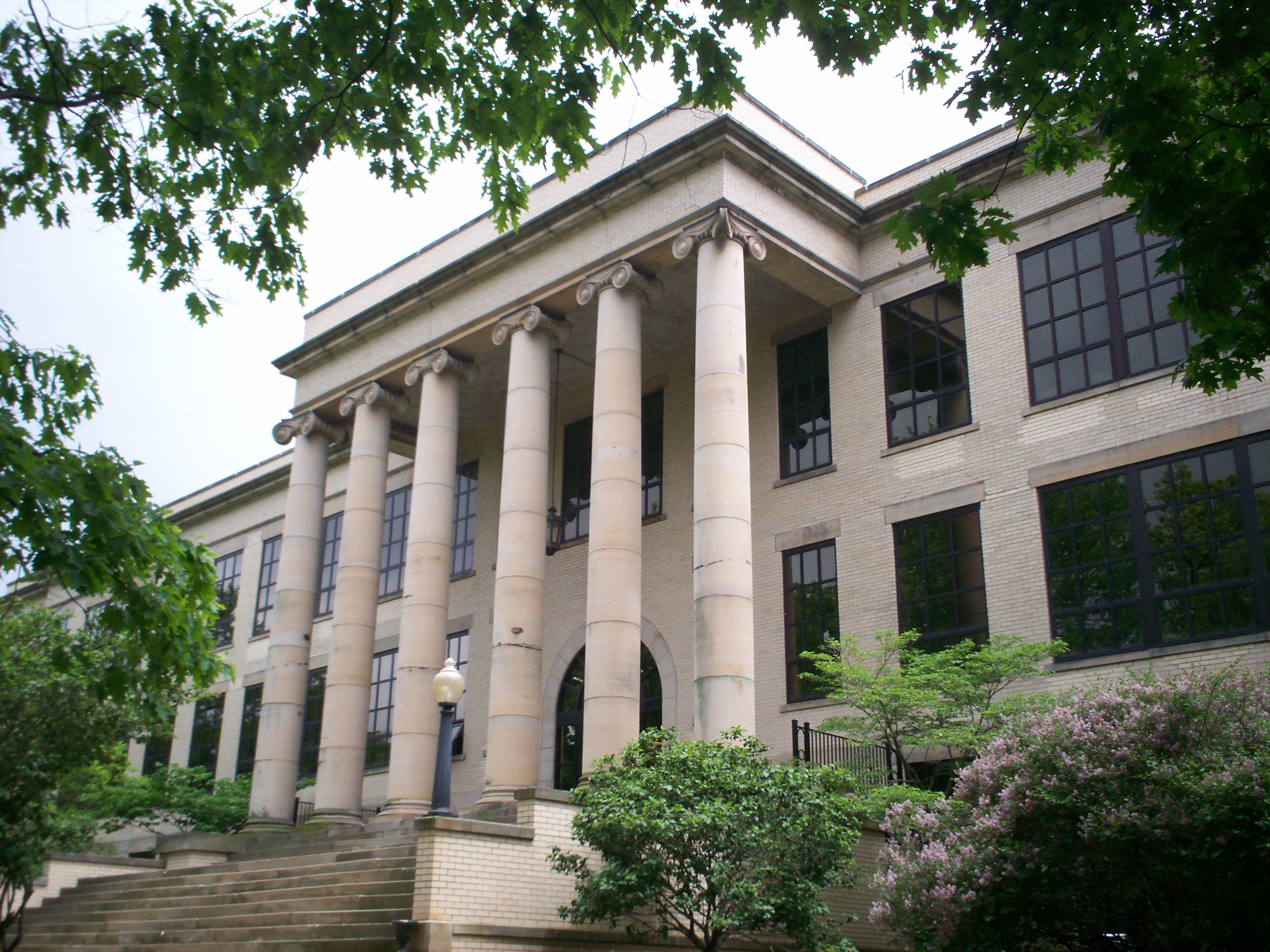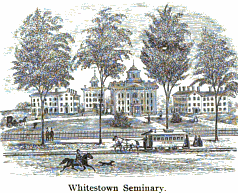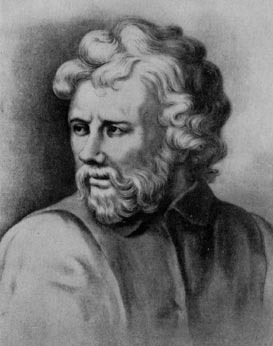|
Asa Mahan
Asa Mahan (; November 9, 1799April 4, 1889) was a U.S. Congregational clergyman and educator and the first president of both the Oberlin Collegiate Institute (later Oberlin College) and Adrian College. He described himself as "a religious teacher and an instructor of youth". Biography Career Asa Mahan graduated from Hamilton College in 1824, and from Andover Theological Seminary in 1827. On November 10, 1829, he was ordained pastor of the Congregational church in Pittsford, New York, and in 1831 he was called to the pastorate of a Presbyterian church in Cincinnati, Ohio. He was a trustee of the new Lane Seminary, the only Lane administrator to vote in favor of the students' right to debate "immmediatism", setting all slaves free immediately, versus colonialism, sending them to Africa. When a majority of Lane's students resigned as a group (the Lane Rebels), to end up at Oberlin a year later (1835), he did as well. At the students' insistence he was appointed President of t ... [...More Info...] [...Related Items...] OR: [Wikipedia] [Google] [Baidu] |
Adrian College
Adrian College is a private liberal arts college in Adrian, Michigan. The college offers bachelor's degrees in 92 academic majors and programs. The 100 acre (0.40 km2) campus contains newly constructed facilities along with historic buildings. Adrian College is affiliated with the United Methodist Church and is accredited by the Higher Learning Commission. The spring 2020-21 enrollment was 1,677 students. History The college has its origin as a theological institute founded by Wesleyan Methodists at Leoni, Michigan, in 1845. This institution merged with Leoni Seminary, another Methodist school, in 1855 to form Michigan Union College. In 1859, that institution closed and its assets were transferred to Adrian "through the efforts of the antislavery leader and educator, Rev. Asa Mahan, who was elected first president of the new Adrian College". The college was chartered by the Michigan Legislature on March 28, 1859. In the early stages of the Civil War the college volunteer ... [...More Info...] [...Related Items...] OR: [Wikipedia] [Google] [Baidu] |
Cincinnati, Ohio
Cincinnati ( ) is a city in the U.S. state of Ohio and the county seat of Hamilton County. Settled in 1788, the city is located at the northern side of the confluence of the Licking and Ohio rivers, the latter of which marks the state line with Kentucky. The city is the economic and cultural hub of the Cincinnati metropolitan area. With an estimated population of 2,256,884, it is Ohio's largest metropolitan area and the nation's 30th-largest, and with a city population of 309,317, Cincinnati is the third-largest city in Ohio and 64th in the United States. Throughout much of the 19th century, it was among the top 10 U.S. cities by population, surpassed only by New Orleans and the older, established settlements of the United States eastern seaboard, as well as being the sixth-most populous city from 1840 until 1860. As a river town crossroads at the junction of the North, South, East, and West, Cincinnati developed with fewer immigrants and less influence from Europ ... [...More Info...] [...Related Items...] OR: [Wikipedia] [Google] [Baidu] |
Cleveland, Ohio
Cleveland ( ), officially the City of Cleveland, is a city in the United States, U.S. U.S. state, state of Ohio and the county seat of Cuyahoga County, Ohio, Cuyahoga County. Located in the northeastern part of the state, it is situated along the southern shore of Lake Erie, across the U.S. Canada–United States border, maritime border with Canada, northeast of Cincinnati, northeast of Columbus, Ohio, Columbus, and approximately west of Pennsylvania. The largest city on Lake Erie and one of the major cities of the Great Lakes region, Cleveland ranks as the List of United States cities by population, 54th-largest city in the U.S. with a 2020 population of 372,624. The city anchors both the Greater Cleveland, Greater Cleveland metropolitan statistical area (MSA) and the larger Northeast Ohio, Cleveland–Akron–Canton combined statistical area (CSA). The CSA is the most populous in Ohio and the 17th largest in the country, with a population of 3.63 million in 2020, while th ... [...More Info...] [...Related Items...] OR: [Wikipedia] [Google] [Baidu] |
Charles Finney
Charles Grandison Finney (August 29, 1792 – August 16, 1875) was an American Presbyterian minister and leader in the Second Great Awakening in the United States. He has been called the "Father of Old Revivalism." Finney rejected much of traditional Reformed theology, teaching that people have complete free will to choose salvation. Finney was best known as a passionate revivalist preacher from 1825 to 1835 in the Burned-over District in Upstate New York and Manhattan, an opponent of Old School Presbyterian theology, an advocate of Christian perfectionism, and a religious writer. His religious views led him, together with several other evangelical leaders, to promote social reforms, such as abolitionism and equal education for women and African Americans. From 1835 he taught at Oberlin College of Ohio, which accepted students without regard to race or sex. He served as its second president from 1851 to 1865, and its faculty and students were activists for abolitionism, the ... [...More Info...] [...Related Items...] OR: [Wikipedia] [Google] [Baidu] |
Kent State University Press
Kent State University (KSU) is a public research university in Kent, Ohio. The university also includes seven regional campuses in Northeast Ohio and additional facilities in the region and internationally. Regional campuses are located in Ashtabula, Burton, East Liverpool, Jackson Township, New Philadelphia, Salem, and Warren, Ohio, with additional facilities in Cleveland, Independence, and Twinsburg, Ohio, New York City, and Florence, Italy. The university was established in 1910 as a normal school. The first classes were held in 1912 at various locations and in temporary buildings in Kent and the first buildings of the original campus opened the following year. Since then, the university has grown to include many additional baccalaureate and graduate programs of study in the arts and sciences, research opportunities, as well as over and 119 buildings on the Kent campus. During the late 1960s and early 1970s, the university was known internationally for its student acti ... [...More Info...] [...Related Items...] OR: [Wikipedia] [Google] [Baidu] |
Kent, Ohio
Kent is a city in the U.S. state of Ohio and the largest city in Portage County. It is located along the Cuyahoga River in Northeast Ohio on the western edge of the county. The population was 28,215 at the 2020 Census. The city is counted as part of the Akron Metropolitan Statistical Area and the larger Cleveland–Akron–Canton Combined Statistical Area. Part of the Connecticut Western Reserve, Kent was settled in 1805 and was known for many years as Franklin Mills. Settlers were attracted to the area due to its location along the Cuyahoga River as a place for water-powered mills. Later development came in the 1830s and 1840s as a result of the settlement's position along the route of the Pennsylvania and Ohio Canal. Leading up to the American Civil War, Franklin Mills was noted for its activity in the Underground Railroad. With the decline of the canal and the emergence of the railroad, the town became the home of the Atlantic and Great Western Railroad maintenance shops t ... [...More Info...] [...Related Items...] OR: [Wikipedia] [Google] [Baidu] |
William Lloyd Garrison
William Lloyd Garrison (December , 1805 – May 24, 1879) was a prominent American Christian, abolitionist, journalist, suffragist, and social reformer. He is best known for his widely read antislavery newspaper ''The Liberator'', which he founded in 1831 and published in Boston until slavery in the United States was abolished by constitutional amendment in 1865. Garrison promoted "no-governmentism" and rejected the inherent validity of the American government on the basis that its engagement in war, imperialism, and slavery made it corrupt and tyrannical. He initially opposed violence as a principle and advocated for Christian nonresistance against evil; at the outbreak of the Civil War, he abandoned his previous principles and embraced the armed struggle and the Lincoln administration. He was one of the founders of the American Anti-Slavery Society and promoted immediate and uncompensated, as opposed to gradual and compensated, emancipation of slaves in the United States. ... [...More Info...] [...Related Items...] OR: [Wikipedia] [Google] [Baidu] |
Abolitionism In The United States
In the United States, abolitionism, the movement that sought to end slavery in the United States, slavery in the country, was active from the late Colonial history of the United States, colonial era until the American Civil War, the end of which brought about the abolition of American slavery through the Thirteenth Amendment to the United States Constitution (ratified 1865). The anti-slavery movement originated during the Age of Enlightenment, focused on ending the trans-Atlantic slave trade. In Colonial America, a few German Quakers issued the 1688 Germantown Quaker Petition Against Slavery, which marks the beginning of the American abolitionist movement. Before the American Revolutionary War, Revolutionary War, Evangelicalism in the United States, evangelical colonists were the primary advocates for the opposition to Slavery in the colonial United States, slavery and the slave trade, doing so on humanitarian grounds. James Oglethorpe, the founder of the Province of Georgia, c ... [...More Info...] [...Related Items...] OR: [Wikipedia] [Google] [Baidu] |
Oneida Institute
The Oneida Institute was a short-lived (1827–1843) but highly influential school that was a national leader in the emerging abolitionist movement. It was the most radical school in the country, the first at which black men were just as welcome as whites. "Oneida was the seed of Lane Theological Seminary, Western Reserve College, Oberlin and Knox colleges." The Oneida Institute was located near Utica, in the village of Whitesboro, New York, town of Whitestown, Oneida County, New York. It was founded in 1827 by George Washington Gale as the Oneida Institute of Science and Industry. His former teacher (in the Addison County Grammar School, Middlebury, Vermont, 1807–1808) John Frost, now a Presbyterian minister in Whitesboro with Harriet Lavinia (Gold) Frost his wife — daughter of Thomas Ruggles Gold, — who was the primary partner in setting up the institute, bringing her considerable wealth to the enterprise. They raised $20,000, a significant part of which was from the ... [...More Info...] [...Related Items...] OR: [Wikipedia] [Google] [Baidu] |
Theology
Theology is the systematic study of the nature of the divine and, more broadly, of religious belief. It is taught as an academic discipline, typically in universities and seminaries. It occupies itself with the unique content of analyzing the supernatural, but also deals with religious epistemology, asks and seeks to answer the question of revelation. Revelation pertains to the acceptance of God, gods, or deities, as not only transcendent or above the natural world, but also willing and able to interact with the natural world and, in particular, to reveal themselves to humankind. While theology has turned into a secular field , religious adherents still consider theology to be a discipline that helps them live and understand concepts such as life and love and that helps them lead lives of obedience to the deities they follow or worship. Theologians use various forms of analysis and argument ( experiential, philosophical, ethnographic, historical, and others) to help u ... [...More Info...] [...Related Items...] OR: [Wikipedia] [Google] [Baidu] |
Ethics
Ethics or moral philosophy is a branch of philosophy that "involves systematizing, defending, and recommending concepts of right and wrong behavior".''Internet Encyclopedia of Philosophy'' The field of ethics, along with aesthetics, concerns matters of value; these fields comprise the branch of philosophy called axiology. Ethics seeks to resolve questions of human morality by defining concepts such as good and evil, right and wrong, virtue and vice, justice and crime. As a field of intellectual inquiry, moral philosophy is related to the fields of moral psychology, descriptive ethics, and value theory. Three major areas of study within ethics recognized today are: # Meta-ethics, concerning the theoretical meaning and reference of moral propositions, and how their truth values (if any) can be determined; # Normative ethics, concerning the practical means of determining a moral course of action; # Applied ethics, concerning what a person is obligated (or permitted) ... [...More Info...] [...Related Items...] OR: [Wikipedia] [Google] [Baidu] |
Moral Philosophy
Ethics or moral philosophy is a branch of philosophy that "involves systematizing, defending, and recommending concepts of right and wrong behavior".''Internet Encyclopedia of Philosophy'' The field of ethics, along with aesthetics, concerns matters of value; these fields comprise the branch of philosophy called axiology. Ethics seeks to resolve questions of human morality by defining concepts such as good and evil, right and wrong, virtue and vice, justice and crime. As a field of intellectual inquiry, moral philosophy is related to the fields of moral psychology, descriptive ethics, and value theory. Three major areas of study within ethics recognized today are: # Meta-ethics, concerning the theoretical meaning and reference of moral propositions, and how their truth values (if any) can be determined; # Normative ethics, concerning the practical means of determining a moral course of action; # Applied ethics, concerning what a person is obligated (or permitted) t ... [...More Info...] [...Related Items...] OR: [Wikipedia] [Google] [Baidu] |







